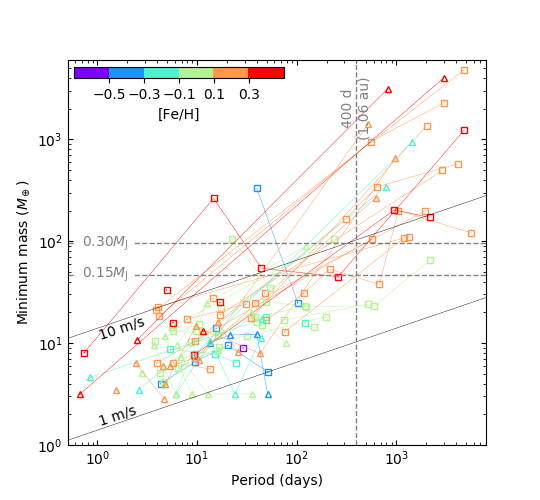Early Jupiter Formation
Wei Zhu
2019-11-21
Image from Maruyama & Ebisuzaki (2017)
A simple picture of
planet formation & evolution

Snow line

Meteorites, Chondrites, CAIs

Hoba meteorite@Namibia (~60 t)

- Iron meteorites: Fe & Ni rich, cores of planetesimals.
- Chondrites: non-metallic meteorites, no melting or differentiation.
- Ca-Al-rich Inclusions (CAIs): sub-mm/mm, found in Carbonaceous chondrites

Genetically distinct populations?


Molybdenum & Tungsten: high melting temperature elements
Hafnium-Tungsten dating technique \(\rightarrow\) core formation time

- \(^{182}\)Hf \(\rightarrow\) \(^{182}\)W: half-life 9 Myr.
- Hf: lithophile (aka, rock-loving)
- W: siderophile(aka, iron-loving)
Accretion time

Al fractions
The story...


Pollack et al. (1996)

Suzuki et al. (2016)
(see Herman, Zhu, & Wu 2019 for the radius distribtuion)

OB120026L:
Core accretion theory of Jupiter formation?
Jupiter preventing super-Earth formation?

Cold Jupiters
Super Earths

22 from Kepler (triangles) + 39 from RV (squares)
(see also Bryan et al. 2019, Herman, Zhu, & Wu 2019)
Giant planet-metallicity correlation
- Giant planet formation is generally inefficient
Fischer & Valenti (2005)

f \propto Z^2 \propto N_{\rm Fe}^2
A problem for pebble accretion?

Figure adapted from Penny et al. (2019)
- Typically super Earths
- ~3 per system
- Gas fraction: a few %.
- If MMSN is the standard nebula model:
- SS evidence requires early Jupiter formation.
- Inner-outer correlation requires later giant planet formation.